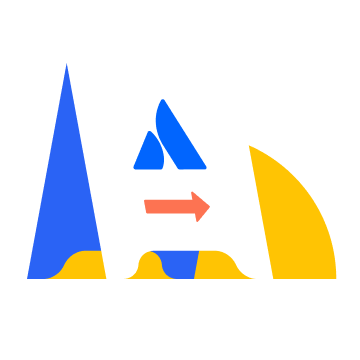Community resources
Community resources
Community resources
How to change unassigned issue's user avatar from "U" on agile board?
Apparently there is a way, I just couldn't figure it out.
Here is the background information:
Our company have a old Jira 6.4 instance, I am asked to migrate it into main 7.13 Jira instance.
So I fresh installed a temporary jira 6.4 instance, restored data from old one; upgraded it into 7.13, migrated it into the main 7.13 instance, all good.
Then user started to complain in the new ( main ) Jira instance's agile board, if a issue is unassigned, it's showing as "U". They feel it's confusing since a user name started with "U" will also be showing as "U" ( although in different color).
Apparently on their old Jira, when a issue is not assigned, it doesn't show any avatar.
I checked it and found on the temporary jira ( fresh installed 6.4 then upgraded to 7.13), it also doesn't show avatar for unassigned issue.
Chrome Dev tool shows the HTML code for their jira is
<div class="ghx-avatar"></div>and in our main jira, it's
<div class="ghx-avatar"><span class="ghx-avatar-img" style="background-color: #ea632b; " data-tooltip="Assignee: Unassigned">U</span></div>
Since the fresh installed Jira also doesn't show "U", I think the configuration should be from the backup/database, but I couldn't find where it is.
2 answers
1 accepted
Hi Jack,
This is a very strange thing to see. I tried to recreate this problem in my 8.0.2 version (without importing data from a backup) and I can't seem to recreate this exactly. In my setup I can see the user's avatar on the card, but not just a letter like in yours. However researching this, I came across this bug JSWSERVER-16075
It might not be exactly what you are seeing but it does describe some unexpected behaviors in Jira versions where the user avatars were not properly updated during an upgrade. I have a theory that your environment might be similarly affected.
Could you tell us more about the steps you took to do this upgrade? You mentioned setting up a fresh 6.4 instance. When you did this, did you also restore the contents of the $JIRAHOME/data/ folder before attempting to upgrade Jira? If this folder was not in place on the filesystem before the upgrade started, then Jira could have updated the references for these files, but not actually changed the filenames/paths accordingly on the filesystem. In cases like this the end users avatars will all be broken and not displaying correctly. I suspect that might be the case here, but would like you to confirm this. If this is the case, it's not so easy just to copy the avatars back in all cases. That might work, but if Jira changed the filepath and/or filename convention between these versions, there isn't a clear way to fix these files without performing the upgrade again. One way would be to setup another test system and repeat the upgrade steps again, this time with $JIRAHOME/data/avatars/ folder in place. After the upgrade is complete there you could try then to copy that entire folder to your main 7.13 Jira site to see if this corrects the broken avatars here.
And did you do a direct upgrade from 6.4.x to 7.13.x? I ask because we actually recommend that you first upgrade to a 7.0.x version of Jira per the Skipping major versions when upgrading JIRA applications. There are some known issues that can be avoided by first updating Jira to a 7.0.x version and then also updating all the plugins that you use with Jira before then doing another upgrade to a 7.13.x version. It might not be required in all cases, but I have seen upgradetasks that cannot be run because too many versions have been skipped in between for some products.
Please let me know.
Andy
Thanks Andy.
I didn't want to make my post too long so didn't mention the upgrade steps. I upgraded it to 7.0.11 first, then 7.13.0.
Now your answer made me thinking maybe what I thought was wrong, maybe Jira's default behavior is not what I thought.
I just fresh installed a 7.13 instance without any data , and its Kanban looks like this:
Unassigned user doesn't have avatar and assigned user shows a gray icon when he doesn't have personal avatar.
So it's the primary server's data caused the other behavior ( when the primary server's database backup restored on a fresh installed system, it shows "U". So it's not some file level configuration or addon, but something in database ).
Seems indicate "First initial" avatars is adapted since 6.3.11. But my fresh installed 7.13 is still using the old way ( user prefered way).
So how Jira decide the avatar style ? It has to be something in database.
You must be a registered user to add a comment. If you've already registered, sign in. Otherwise, register and sign in.
OK I think I figured out half of the puzzle. there is a "gavatar" system configuration. On fresh installed Jira 7.13, it's setup as "ON". Then jira shows the icon/empty image. If I switch it to "Off", Jira shows user Iniatial and for unassigned user, it shows empty.
In our primary Jira, the option is off and it shows "U" for unassigned user ( different than fresh Jira); if I turn it to "on", it shows same icon for both unassigned issue and user without avatar ( also different than fresh Jira ).
So the issue is our primary Jira has some data issue causing it shows "U" and a user icon for unassigned issue, which is different than default behavior.
You must be a registered user to add a comment. If you've already registered, sign in. Otherwise, register and sign in.
OK figured out the other half. It looks like our primary Jira is treating unassigned user as a regular user. I searched user directory and find a local disabled user with username "unassigned", full name "Unassigned".
I changed its full name to " Unassigned", the "U" is gone. Not sure why it's setup this way, but it's what it is.
You must be a registered user to add a comment. If you've already registered, sign in. Otherwise, register and sign in.
Thanks for sharing this info Jack, I completely forgot about the option to use gravatar would display these differently within Jira. Also good to note that you had a disabled user called 'unassigned', I have seen environments with this before, but it only tends to happen when the system admin disables the 'Allow unassigned issues' system wide. When that happens all issues need to be assigned to someone, so it sounds like they created a service account to handle that.
Regarding your last mention of :
One hidden issue here is seems jira treat '' and 'unassigned' value in jiraissue's assignee field as same.
This makes sense in a way since a value for a field of '' is essentially NULL or no value at all. When an issue is unassigned in Jira, that assignee field is actually empty or Null in the database. Jira just populates the web interface to say 'unassigned' when that field is empty to make it clear to end users there is no value there. The same can happen for other system fields like resolution.
Cheers,
Andy
You must be a registered user to add a comment. If you've already registered, sign in. Otherwise, register and sign in.
The issue is when a issue is really unassigned ( in database jiraissue's assignee value is '') , in Agile board Jira tried to find a user with app_user.user_key = 'unassigned' , then it found the disabled user and showed that user's avatar.
You must be a registered user to add a comment. If you've already registered, sign in. Otherwise, register and sign in.
What would be the best way to display an avatar for Unassigned, if you needed one?
You must be a registered user to add a comment. If you've already registered, sign in. Otherwise, register and sign in.









You must be a registered user to add a comment. If you've already registered, sign in. Otherwise, register and sign in.